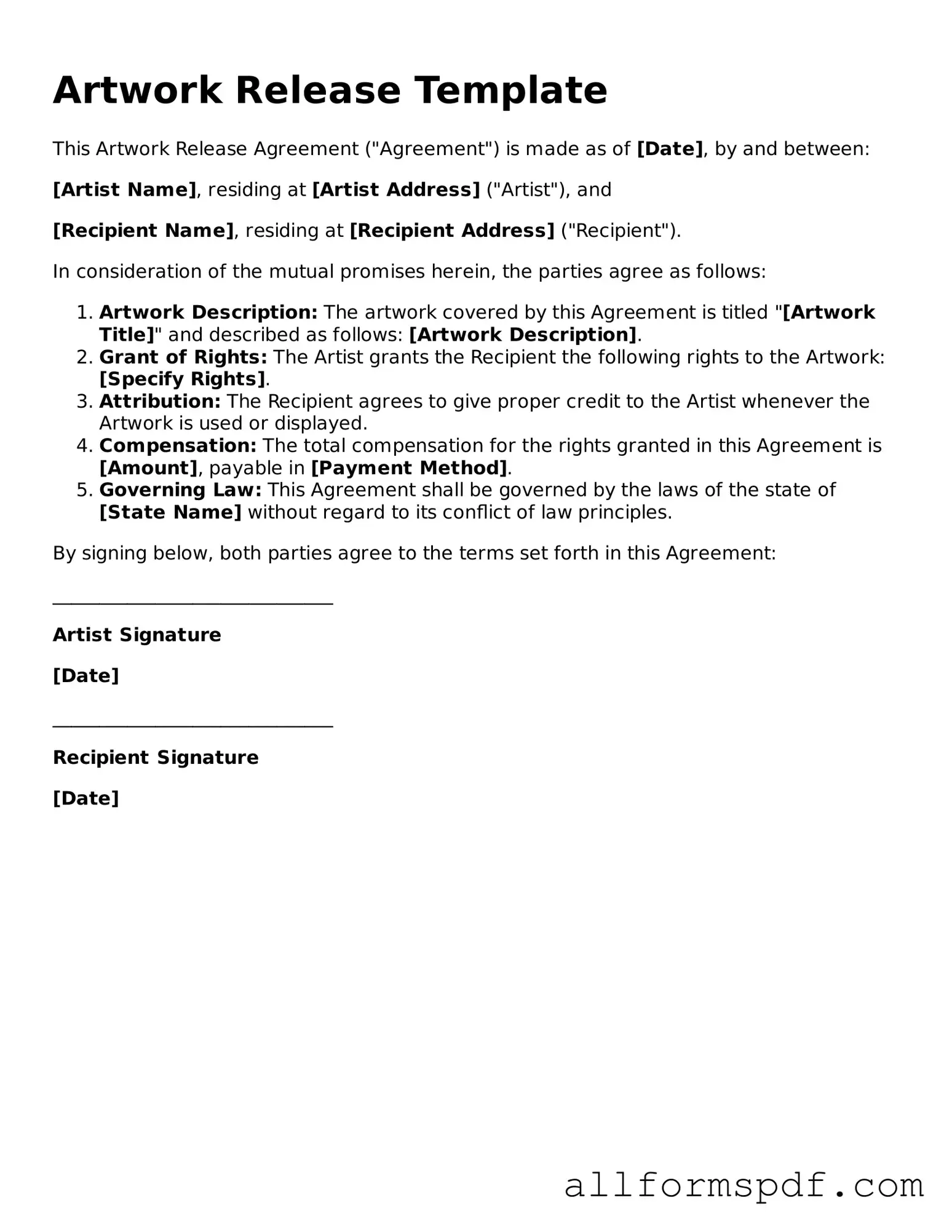Filling out an Artwork Release form is a crucial step for artists and creators who wish to protect their work and ensure proper usage rights. However, several common mistakes can lead to complications down the line. Understanding these pitfalls can help individuals navigate the process more effectively.
One frequent error is neglecting to include all relevant details about the artwork. This includes the title, medium, and date of creation. Omitting such information can create confusion regarding ownership and rights. Always ensure that every piece of artwork is clearly identified to avoid potential disputes.
Another mistake occurs when individuals fail to specify the scope of the release. It is essential to outline how the artwork may be used, whether for commercial purposes, promotional materials, or other specific applications. Without clear guidelines, the artist may lose control over how their work is utilized.
People often overlook the importance of signatures. Both the artist and the party receiving the rights must sign the form. A missing signature can render the release invalid, leaving the artist unprotected. Always double-check that all necessary parties have signed before finalizing the document.
Inadequate understanding of the term duration is another common issue. The release should specify how long the rights are granted. If no timeframe is indicated, the rights may be assumed to be perpetual, which might not align with the artist's intentions. Clarity in this area is vital to maintain control over the artwork.
Additionally, many individuals neglect to consult legal counsel when drafting or reviewing the release. While it may seem straightforward, having a legal professional can provide insights that help avoid future legal challenges. Engaging an expert can ensure that the form meets all necessary legal requirements.
Another mistake is failing to keep copies of the signed form. Once the release is executed, both parties should retain a copy for their records. This documentation can be invaluable if disputes arise later. Always ensure that both the artist and the recipient have access to the finalized document.
Finally, some people may rush through the process without reading the entire form. Each section contains important information that can impact rights and responsibilities. Taking the time to thoroughly review the form can prevent misunderstandings and protect the interests of all parties involved.
